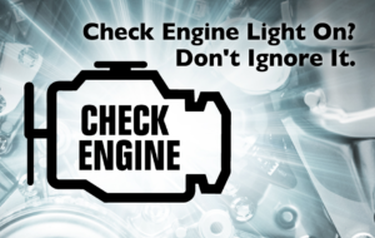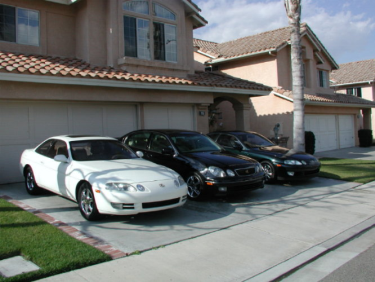

Welcome to Bumper to Bumper Radio!
Drive in anxious and cruise out confident with the best automotive information for your vehicle! Tune in to KTAR News 92.3 every Saturday from 11 a.m. to noon as Matt Allen helps listeners with their car problems. The show call in number is 602-277-5827.
Latest News From Bumper to Bumper Radio

According to the annual CarMD® Vehicle Health Index™ one of the most common check engine light repairs is replacing the oxygen sensor. This relatively minor repair can be costly if neglected, leading to as much as 40 percent lower fuel efficiency, causing further damage to your vehicle’s exhaust system and adversely impacting the environment.
“Vehicles with faulty oxygen sensors typically seem to drive and handle well, but the malfunction can dramatically decrease fuel efficiency and lead to costlier repairs if ignored,” said Rich White, executive director, Car Care Council. “A faulty oxygen sensor means your vehicle is emitting more pollutants and if the check engine light is illuminated, it may not pass vehicle emissions testing in those states requiring it for vehicle registration.”
A vehicle’s oxygen sensors are mounted in the exhaust system; they monitor the catalytic convertor’s operation and the level of oxygen in exhaust gases to maintain efficient engine operation. The best way to prevent an oxygen sensor failure is to follow a regular service schedule, including routine oil changes.
Unlike the past nine years of the annual CarMD report, costly catalytic converter replacement edged out O2 sensor replacement as the most common check engine light repair. Catalytic converters do not typically fail unless maintenance and other repairs are ignored or the vehicle is older. Average vehicle age has increased from 10.6 years to 11.7 years over the past decade, contributing to this outcome.

State gas price averages increased for less than a dozen states in the last week, but they were large enough jumps to push an increase to the national average. At $1.78, today’s average is a penny more expensive than last week, 16 cents less than a month ago and $1.11 cheaper than last year at this time.
“As some states begin to re-open businesses, those states will likely see demand increase and pump prices will likely follow suit,” said Jeanette Casselano, AAA spokesperson. “Although U.S. gasoline demand has incrementally increased, it remains below 6 million b/d.”
On the week, the Great Lakes and Central region saw double-digit increases in a few states, but the bulk of the country saw decreases of a nickel or less. Pump price fluctuation will continue across the country in coming weeks, especially as more states re-open and motorists begin driving more.
Quick Stats
The nation’s top 10 largest weekly changes are: Wisconsin (+27 cents), Ohio (+19 cents), Indiana (+16 cents), Michigan (+13 cents), Iowa (+7 cents), Illinois (+6 cents), Kentucky (+6 cents), Utah (-6 cents), Montana (-6 cents) and Wyoming (-5 cents).
The nation’s top 10 least expensive markets are: Oklahoma ($1.37), Arkansas ($1.39), Missouri ($1.44), Kansas ($1.46), Wisconsin ($1.46), Mississippi ($1.48), Kentucky ($1.49), Texas ($1.49), Michigan ($1.53) and Tennessee ($1.54).
West Coast
As some regions are seeing prices increase, all states in the West Coast region continue to see pump prices decline, albeit slower than a month ago. On the week, Oregon (-4 cents) and Arizona (-4 cents) saw the largest declines in the region. Hawaii ($3.15) and California ($2.74) remain the most expensive markets in the country. Washington ($2.44), Oregon ($2.38), Nevada ($2.31), Arizona ($2.10) and Alaska ($2.00) follow.
According to EIA’s latest weekly report, total gas stocks in the region decreased from 34.7 million bbl to 32.7 million bbl last week. Refinery utilization also dropped in the region to 59 percent, which contributed to the decline in gas stocks and is the lowest rate in the region since 2010, according to EIA’s data. Although stocks have decreased, low gas demand in the region is expected to bring continued lower pump prices.

Expertise looked at 345 Auto Body Shops serving Phoenix and Picked the Top 17.
Their goal was to connect people with the best local experts. Auto Body Shops were scored on more than 25 variables across five categories, and analyzed the results to give you a hand-picked list of the best Auto Body Shops in Phoenix, AZ. Bumper to Bumper shops Campus Body Salon and I-17 Collision were bother honored to be included.
Selection Criteria:
1. Reputation
A history of delighted customers and outstanding service.
2. Credibility
Building customer confidence with licensing, accreditations, and awards.
3. Experience
Masters of their craft, based on years of practical experience and education.
4. Availability
Consistently approachable and responsive, so customers never feel ignored.
5. Professionalism
Providing service with honesty, reliability, and respect.

As gas prices continue to push cheaper across the country, only one dozen states carry an average of $2/gallon or more. Today’s national average is $1.77, which is four cents less than last week, 28 cents cheaper than last month and $1.11 less than a year ago.
Crude oil prices were extremely volatile last week, pushing negative for the first time ever, but they did make significant gains to end the week in the positive. The Energy Information Administration (EIA) reported demand at 5.3 million b/d, a slight increase, but still an extremely low rate compared to last April’s 9.45 million b/d average. Low demand pushed gasoline stocks to increase for yet another week, this time by 1 million bbl to put total U.S. stock levels at 263 million bbl.
“AAA forecasts that the national average will continue to decrease into next month, possibly dropping as low as $1.65,” said Jeanette Casselano, AAA spokesperson. “We haven’t seen gas prices that cheap since January 2009.”
Some states could see minimal fluctuation at the pump in coming weeks if demand jumps as businesses are given the green light to re-open. However, this will not have a large impact for the majority of the nation’s motorists.
Quick Stats
The nation’s top 10 largest weekly decreases are: Alaska (-9 cents), Idaho (-8 cents), Arizona (-7 cents), Utah (-7 cents), Montana (-6 cents), Oregon (-6 cents), Michigan (-6 cents), Missouri (-6 cents), Washington (-5 cents) and South Dakota (-5 cents).
The nation’s top 10 least expensive markets are: Wisconsin ($1.19), Oklahoma ($1.36), Ohio ($1.38), Michigan ($1.40), Arkansas ($1.42), Kentucky ($1.43), Indiana ($1.44), Missouri ($1.46), Iowa ($1.47) and Mississippi ($1.49).
West Coast
The West Coast region continues to see significant decreases despite carrying some of the most expensive averages in the country. On the week, Alaska (-9 cents) saw the largest decline in the region and the country. Hawaii ($3.18) and California ($2.76) remain the most expensive markets in the country. Washington ($2.47), Oregon ($2.42), Nevada ($2.33), Arizona ($2.14) and Alaska ($2.02) follow.
According to EIA’s latest weekly report, total gas stocks in the region decreased slightly from 35 million bbl to 34.7 million bbl last week. Low crude prices and gas demand will likely help to push pump prices lower in the region this week.

With a majority of vehicle owners living in areas of the country that have stay-at-home orders, many vehicles may be sitting idle for days or weeks at a time. The non-profit Car Care Council recommends starting your car at least once a week and keeping up with routine auto care to help prevent potential maintenance issues.
“Just as it is recommended that people stay active during this time of social distancing, your car should get some activity as well,” said Rich White, executive director, Car Care Council. “If your vehicle sits idle for too long, the battery could die, the tires can develop flat spots and the engine oil may start to deteriorate. Just a short solo drive once a week and a little car care will keep your car running efficiently and safely.”
When starting your car weekly, let it run for at least five minutes. If the vehicle is started in a garage, make sure the garage door is open and there is plenty of ventilation. In addition, the Car Care Council suggests monitoring the following areas of your vehicle if it sits idle for long periods of time.
Battery – Today’s vehicles have several computers that are always in operation, so if a car sits too long without recharging, the battery could die within a couple of weeks.
Tires – Maintain proper tire pressure to improve vehicle performance and gas mileage. Doing so is also important for vehicle safety. Checking the tire pressure frequently is more important if the car is parked for long periods of time. Vehicles that sit idle too long can develop flat spots, so taking a brief drive every once in a while will help prevent bald spots, and recharge the battery, too.



















